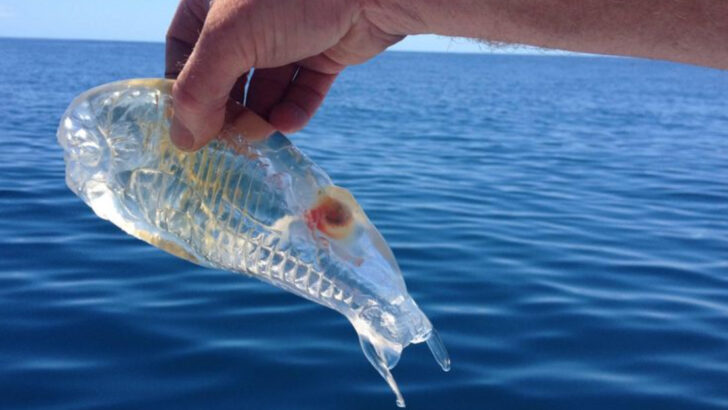The ocean is weirder than space.
Forget aliens — the real freak show is happening right now, thousands of feet below the surface.
Down there, creatures glow, inflate, dangle lures from their foreheads, and turn inside out just to eat lunch. It’s dark. It’s cold. And it’s full of monsters that make sci-fi look lazy.
You’ve seen sharks. You’ve seen dolphins. Cute. Predictable.
Now meet the ones you’ve never heard of — the jaw-dropping, nightmare-sparking, utterly ridiculous residents of the deep.
Some look like melted candy. Others move like ghosts or puppets on invisible strings.
And all of them are real.
We’re diving into the weirdest corners of the sea — no snorkel needed.
Just bring your curiosity… and maybe a nightlight.
Gulper Eel
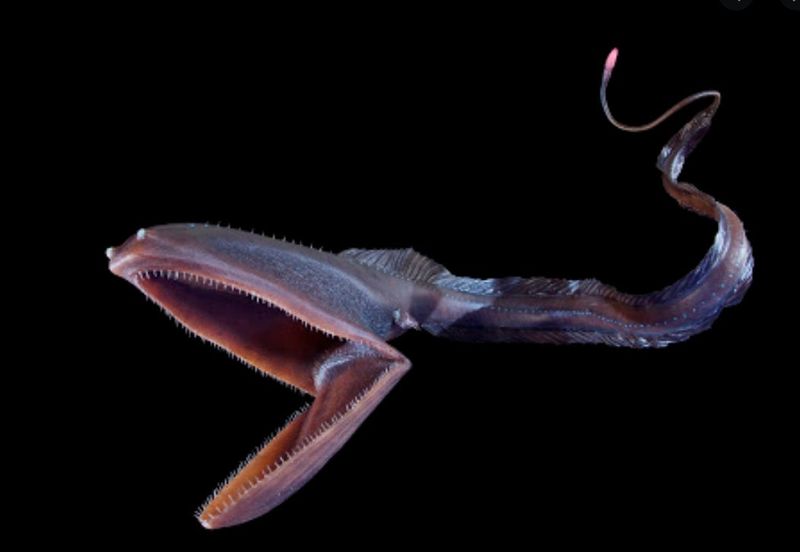
Imagine a creature that looks like it’s straight out of a science fiction movie. The gulper eel is a deep-sea dweller known for its massive mouth which can inflate like a balloon.
This adaptation helps it swallow prey much larger than itself. Its long, slender body is reminiscent of an eel, but with a tail that glows in the dark, it stands out in the dark ocean depths.
Rarely seen by humans, the gulper eel uses its bioluminescent tail to attract curious fish. Surprisingly, it has tiny, almost non-existent teeth, making it a gentle giant in its eerie domain.
Axolotl
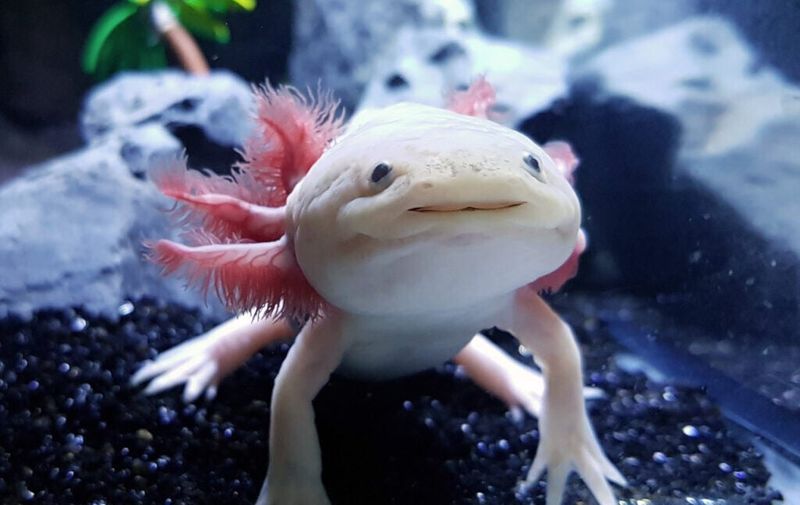
The axolotl is not just a cute face; it’s a fascinating creature with remarkable regenerative abilities. Native to Mexico, this salamander retains its juvenile features throughout its life, a phenomenon known as neoteny.
With its external feathery gills and perpetual smile, the axolotl is a master of regeneration, capable of regrowing limbs, spinal cords, heart, and other organs. Despite its resilience, it’s critically endangered in the wild.
Conservation efforts are underway to protect this unique amphibian whose charm and biological capabilities continue to captivate scientists and hobbyists alike.
Blobfish
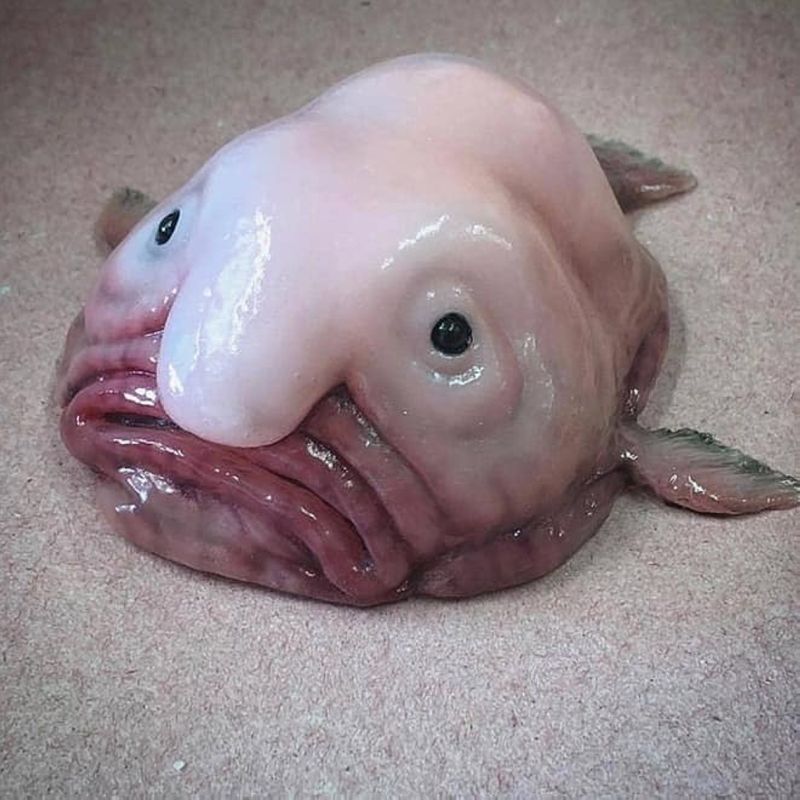
With a face only a mother could love, the blobfish defies conventional beauty standards. Found in the deep waters off the coast of Australia and New Zealand, its gelatinous physique becomes more apparent when out of water.
Under pressure, literally and figuratively, this fish inhabits depths where the atmospheric pressure is significantly higher, giving it a more compact form. Out of its natural habitat, it transforms into a droopy, blob-like creature.
Despite its sad demeanor, the blobfish is a survivor, thriving in conditions hostile to most other marine life.
Leafy Sea Dragon
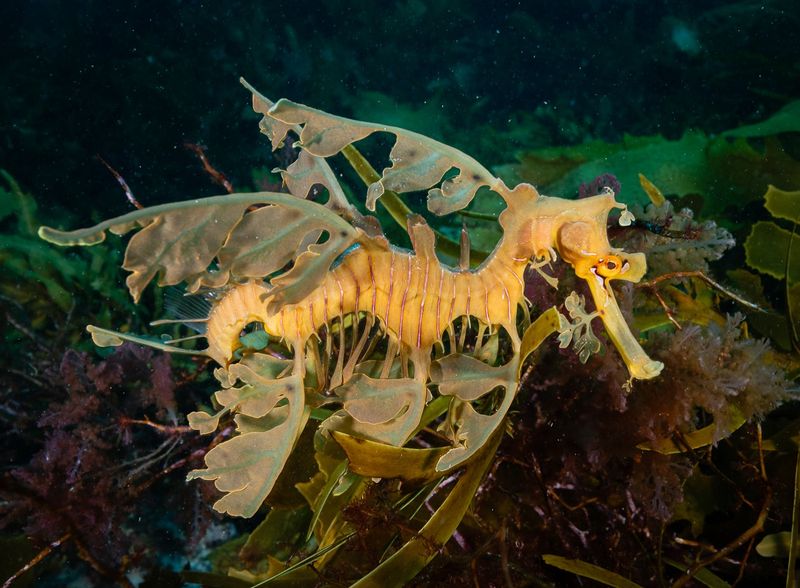
Adorned with leaf-like appendages, the leafy sea dragon is a masterpiece of camouflage. Found along the southern coasts of Australia, it drifts gracefully amongst seaweed and kelp, almost indistinguishable from its surroundings.
This distant relative of the seahorse uses its appearance to avoid predators, blending seamlessly with the underwater foliage. Unlike many of its relatives, the leafy sea dragon propels itself with small, transparent fins on either side of its body.
Its unique beauty and elegance make it a favorite among divers and marine enthusiasts.
Vampire Squid
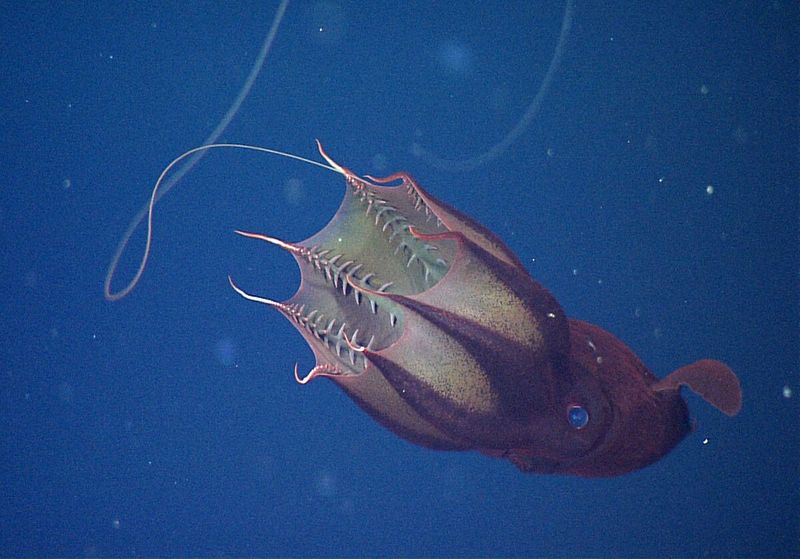
The vampire squid, with its menacing name and eerie appearance, might sound like a creature of nightmares. Yet, this deep-sea dweller is far from fearsome. Its dark, cloak-resembling webbing connects its arms, giving it a vampire-like appearance.
Adapted to the oxygen-poor depths of the ocean, it uses bioluminescent organs to ward off predators. Unlike other cephalopods, the vampire squid does not ink but releases a bioluminescent mucus cloud to escape threats.
Its unique adaptation strategies make it a fascinating study for marine biologists.
Yeti Crab
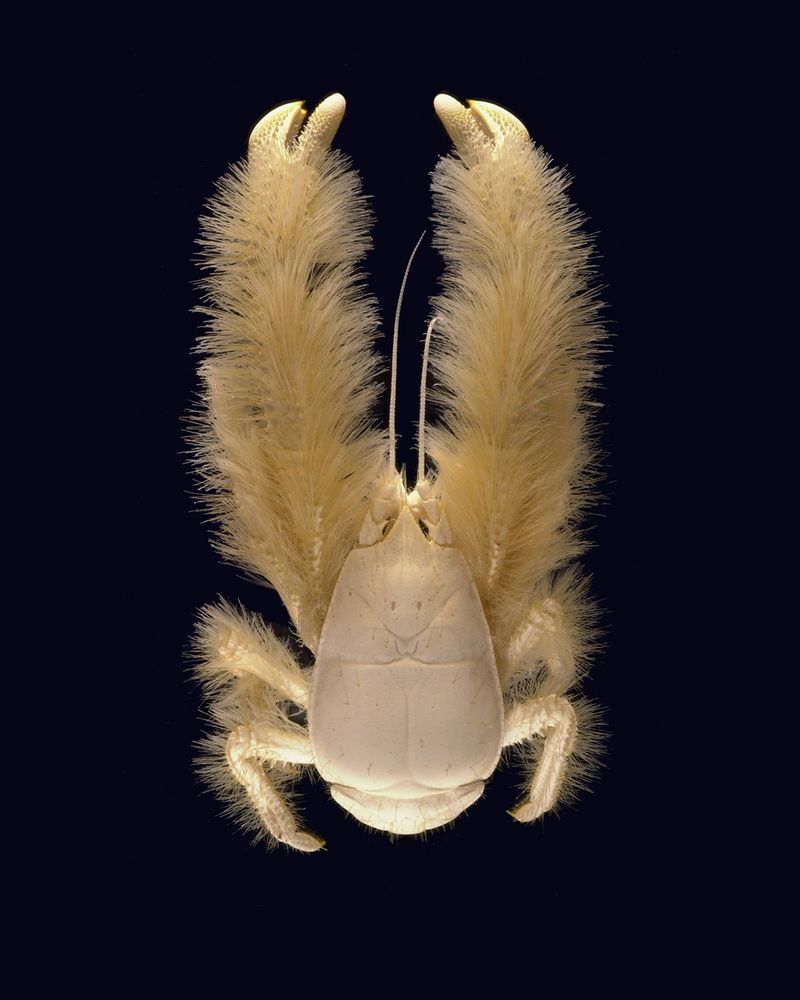
Discovered near hydrothermal vents in the South Pacific, the yeti crab boasts hairy claws that resemble the mythical Yeti. These thick-set crustaceans live in extreme conditions where temperatures fluctuate drastically.
Their ‘fur’ is not just for show; it’s covered in filamentous bacteria that may detoxify poisonous minerals emitted by the vents.
The yeti crab’s discovery expanded our understanding of life in extreme environments, showing that even the harshest places can be home to life forms with peculiar adaptations.
Barreleye Fish
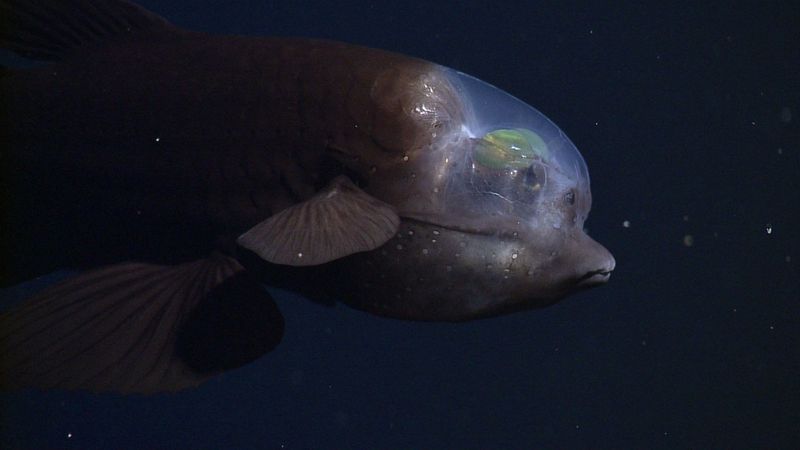
A marvel of nature, the barreleye fish has a transparent head and tubular eyes that rotate to look upward. This adaptation allows it to spot prey against the faint light that filters down from the surface.
Living in the twilight zone of the ocean, its unique eyes can detect faint silhouettes of creatures above. Its transparent dome not only protects its eyes but also provides an unobstructed view of its environment.
This peculiar fish continues to intrigue scientists with its unusual anatomy and survival strategies.
Mimic Octopus
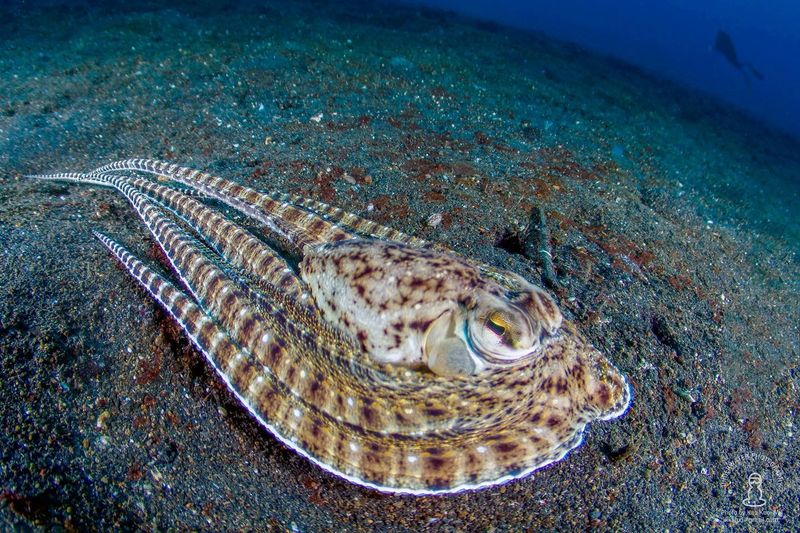
The mimic octopus, a true master of disguise, can imitate the appearance and movements of other sea creatures. Found in the Indo-Pacific, it can morph into lionfish, flatfish, and even sea snakes to deter predators.
This intelligent mollusk not only changes its shape but also adjusts its color patterns to blend with its environment. Its ability to accurately mimic dangerous creatures provides a unique survival advantage.
The mimic octopus remains a testament to the evolutionary marvels of intelligence and adaptation in marine life.
Anglerfish
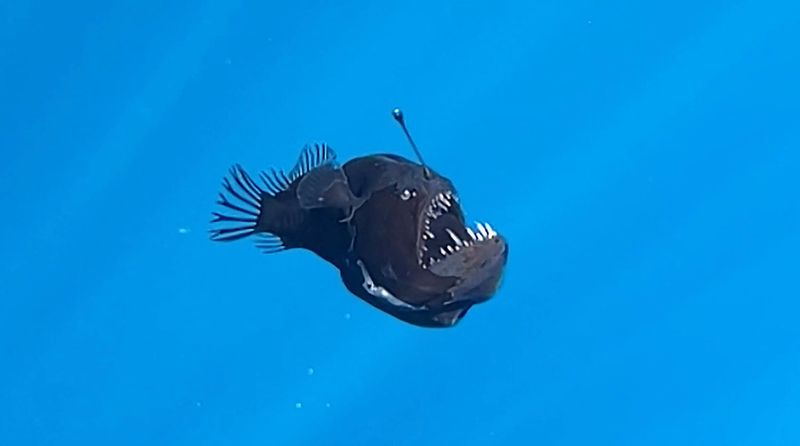
In the dark abyss of the ocean, the anglerfish uses a glowing lure to attract unsuspecting prey. This specialized appendage protrudes from its head, creating an eerie beacon in the pitch-black waters.
Female anglerfish are particularly notable for their size and their bioluminescent adaptation, which supports their hunting technique.
Despite its fearsome visage, the anglerfish plays a crucial role in its ecosystem, maintaining the balance in the food chain of the deep sea. Its unique hunting strategy captivates scientists and ocean enthusiasts alike.
Sea Pen

Resembling a quill pen, the sea pen is a colonial marine cnidarian found anchored in sandy ocean floors. These fascinating creatures consist of multiple polyps working together, extending to feed on plankton.
Sea pens exhibit a gentle luminescence when disturbed, adding an ethereal glow to the sea bed. Their structure allows them to sway gracefully with ocean currents, resembling the gentle strokes of a brush.
Sea pens are not just beautiful; they play a vital role in the ocean’s ecology by filtering nutrients.
Narwhal
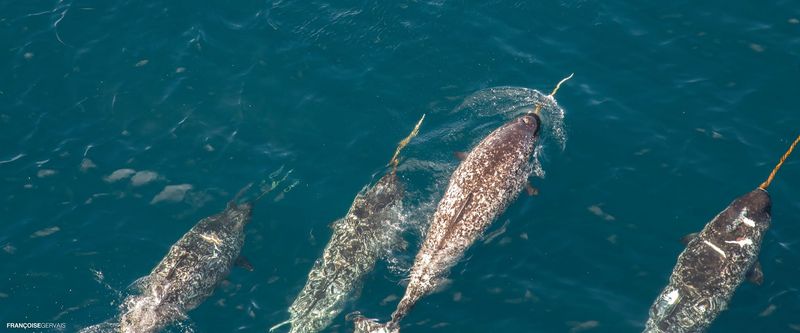
Often dubbed the ‘unicorn of the sea,’ the narwhal is known for its long, spiral tusk that protrudes from its head. Found in the Arctic waters, this tusk is actually an elongated tooth with sensory capabilities.
Narwhals use their tusks to detect changes in the environment, such as temperature and salinity, essential for survival in the icy Arctic waters.
Social creatures, narwhals travel in groups, their tusks slicing through the frigid water. These majestic mammals continue to inspire myths and legends with their mysterious behavior and habitat.
Fangtooth Fish
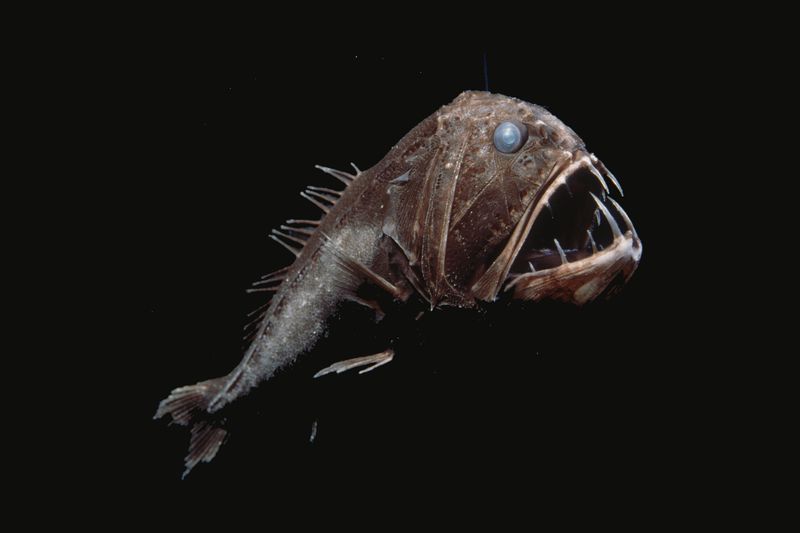
The fangtooth fish, despite its intimidating appearance, is a small, deep-sea resident. Its disproportionately large teeth and menacing jaw make it one of the most fearsome-looking fish in the ocean.
Adapted to life in the dark, pressure-heavy depths, the fangtooth uses its acute sense of smell to locate prey. Its teeth are so long that it has evolved special sockets to accommodate them when its mouth is closed.
This fascinating fish challenges our perception of beauty and adaptation in the vast ocean.
Immortal Jellyfish
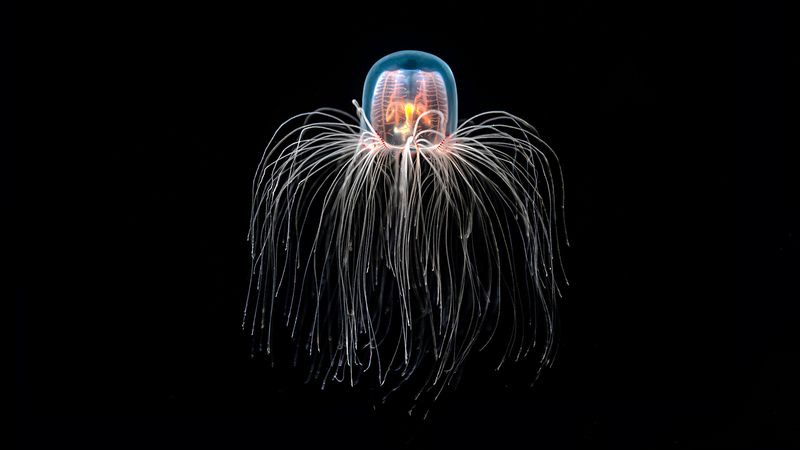
The immortal jellyfish possesses a seemingly magical ability—it can revert to its juvenile form, essentially cheating death. Found in the Mediterranean and Japanese waters, it goes through a unique cycle of maturation and rejuvenation.
When stressed or injured, it transforms back into a polyp, starting its life cycle anew. This remarkable process has intrigued scientists, as it offers insights into aging and immortality.
Despite its delicate appearance, the immortal jellyfish represents resilience and adaptability in an ever-changing marine environment.
Christmas Tree Worm
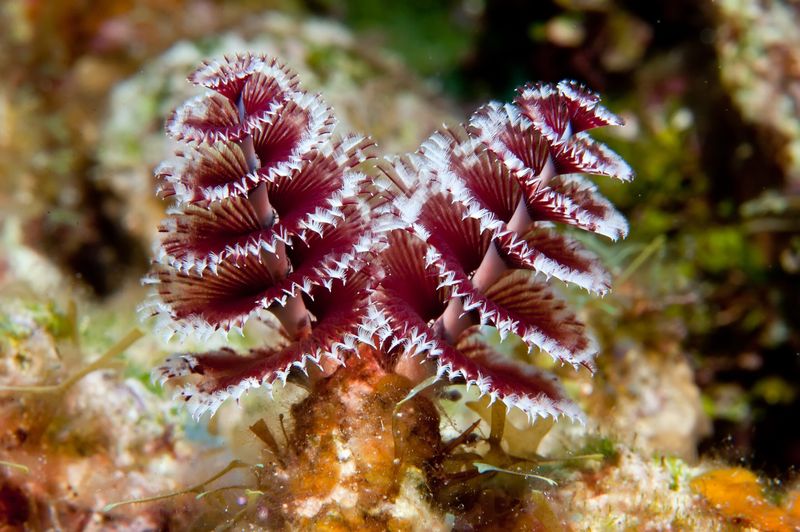
The Christmas tree worm, with its vibrant, spiral plumes, resembles a miniature holiday tree. Found in coral reefs worldwide, these worms use their colorful appendages to filter feed plankton from the water.
Their beauty is not only skin-deep; they play a critical role in the reef ecosystem by maintaining coral health. Each worm burrows into coral, creating a protective tube that enhances reef stability.
Despite their festive appearance, Christmas tree worms are vital engineers in their underwater world.
Dumbo Octopus
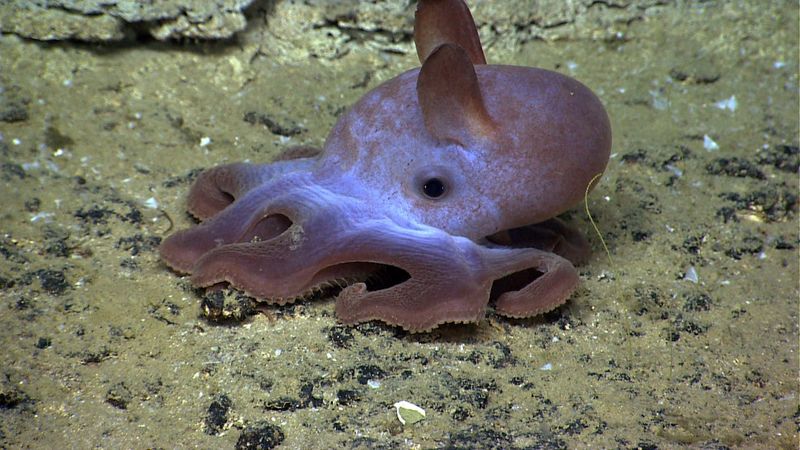
Named for its ear-like fins resembling Disney’s Dumbo, the dumbo octopus is a deep-sea marvel. Found at depths of 13,000 feet, it uses its fins to gracefully propel itself through the water.
This soft-bodied cephalopod displays a range of colors, adapting to its environment for camouflage. Unlike many of its relatives, the dumbo octopus doesn’t squirt ink.
Instead, it relies on its agility and the vast ocean depths for protection. Its gentle demeanor and unique appearance make it a favorite among deep-sea researchers.
Salp
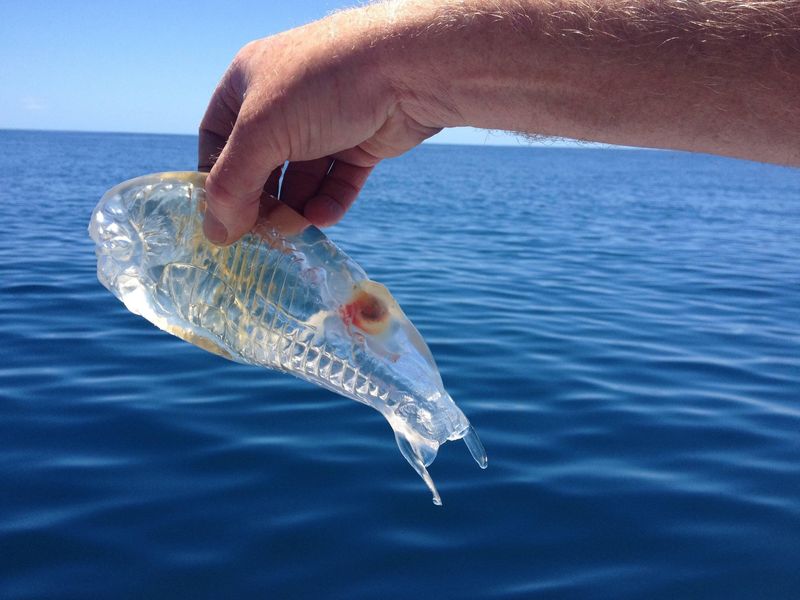
Salps are gelatinous, barrel-shaped organisms that float through the ocean in long chains. Their transparent bodies are almost invisible in the water, allowing them to drift unnoticed by predators.
These fascinating creatures use jet propulsion to move, contracting their bodies to push water through their internal filters. This unique locomotion method allows salps to travel efficiently across vast stretches of ocean.
In addition to their intriguing movement, salps play an essential role in carbon cycling by sinking organic material to the ocean floor, helping to mitigate climate change effects.

